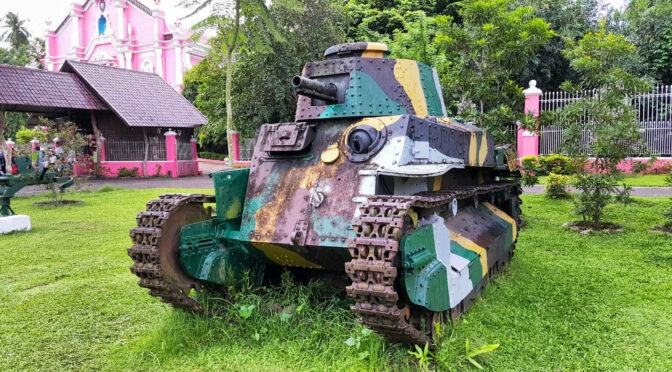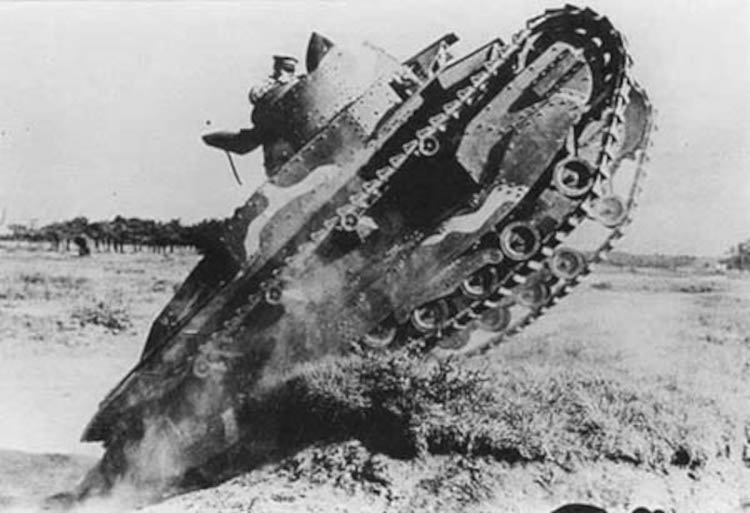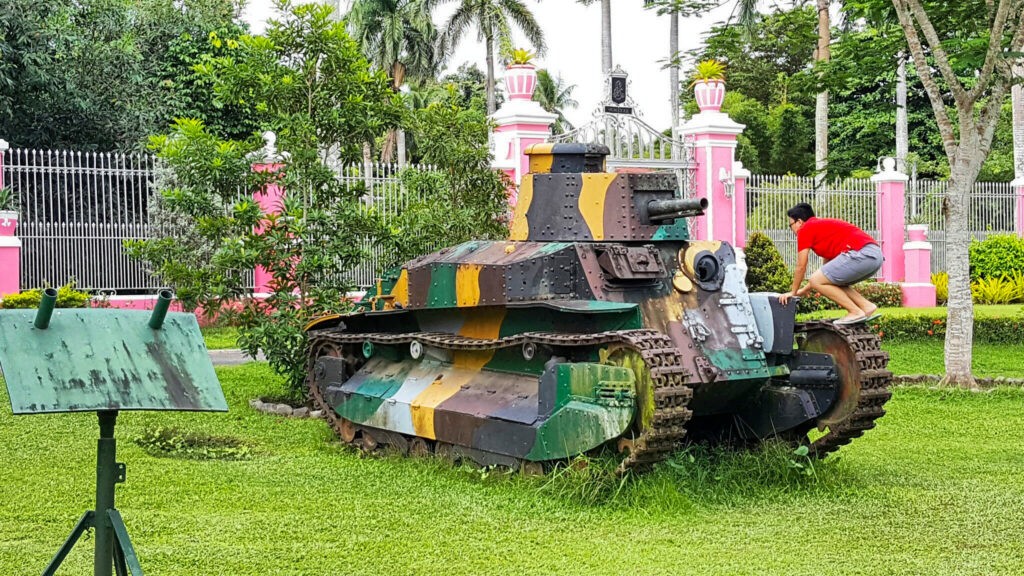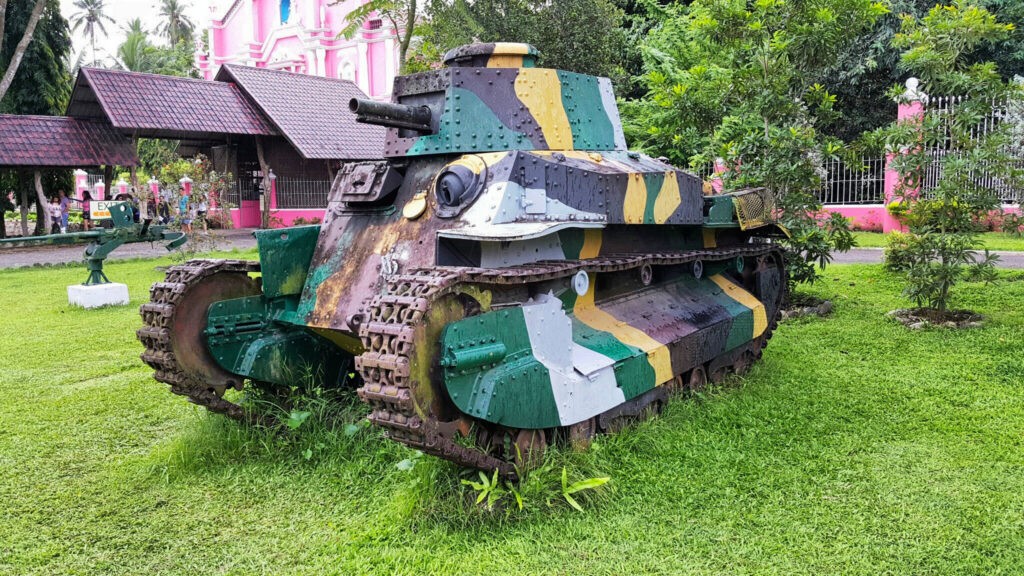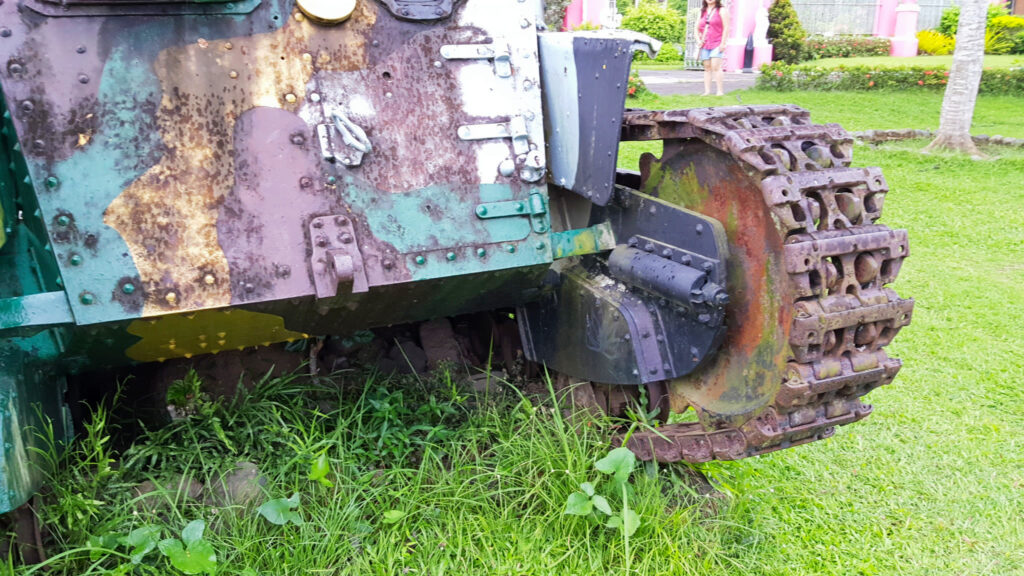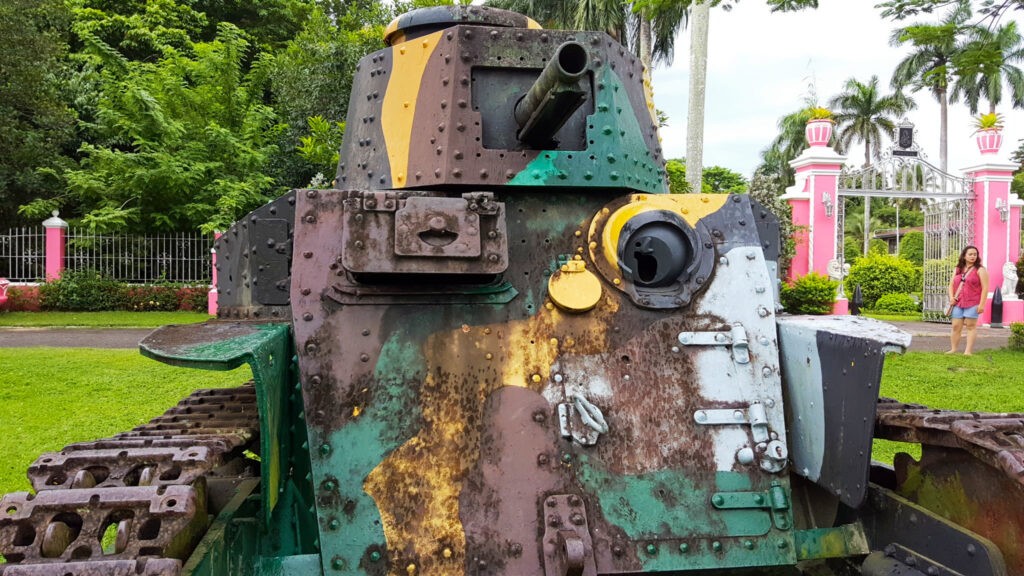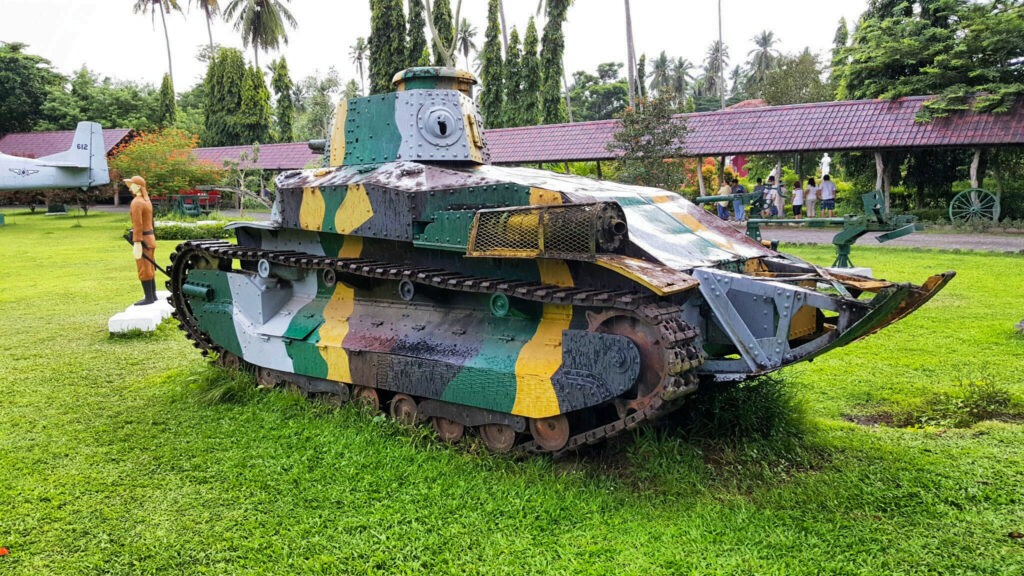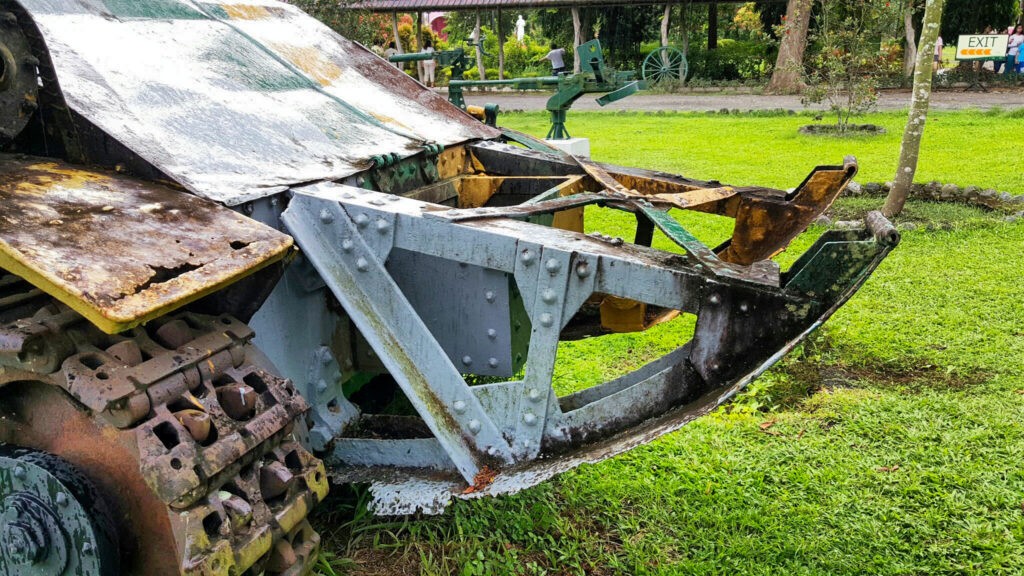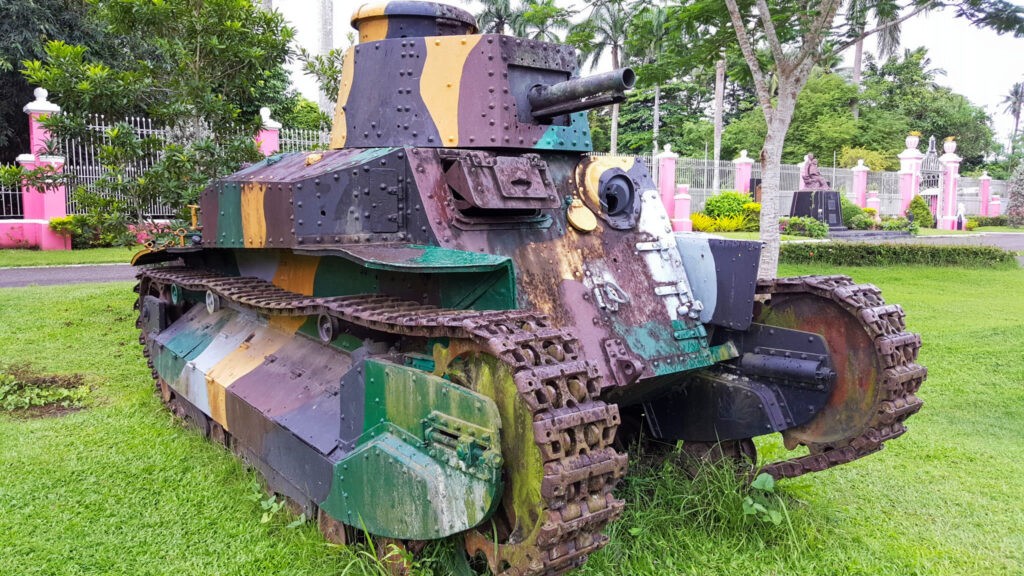The strategic competition between the United States and the People’s Republic of China (PRC) is increasingly centered on the South China Sea, with the U.S.-Philippines alliance emerging as a critical focal point. While the prospect of conventional, high-intensity warfare often dominates strategic planning, the most probable form of conflict will be unconventional, waged across a spectrum of non-military domains. This report posits that an unconventional war between the U.S.-Philippines alliance and China will not be a singular, decisive event but a protracted, integrated campaign of coercion designed to test the alliance’s resilience, political will, and legal foundations. China’s strategy is calibrated to achieve strategic objectives below the threshold of what would traditionally constitute an “armed attack,” thereby complicating the invocation of the 1951 Mutual Defense Treaty (MDT) and placing the onus of escalation on Washington and Manila.
This analysis presents five plausible scenarios for such a conflict, each rooted in a different primary domain: maritime lawfare, cyber warfare, economic coercion, information warfare, and proxy conflict. These scenarios are not mutually exclusive; rather, they represent distinct but interconnected fronts in a single, cohesive strategy of integrated coercion. From a legally ambiguous “quarantine” of a Philippine outpost to a crippling cyberattack on critical infrastructure and an AI-driven disinformation blitz aimed at fracturing the alliance from within, these scenarios illustrate the multifaceted nature of the threat.
Key findings indicate a fundamental asymmetry in strategic philosophy. China pursues a patient, indirect strategy of accumulating advantages over time, akin to the game of Go, aimed at creating a new status quo. The U.S.-Philippines alliance, conversely, is postured to respond to discrete, escalatory events, a more reactive model. China deliberately exploits this doctrinal gap, employing gray-zone tactics to create strategic dilemmas that force the alliance into a perpetual state of reactive uncertainty, caught between the risks of overreaction and the erosion of credibility.
The report concludes with strategic recommendations for the alliance. These include bolstering integrated deterrence through multi-domain exercises, enhancing Philippine national resilience with a focus on cyber defense and societal immunity to disinformation, and, most critically, clarifying alliance commitments to address severe non-kinetic attacks. To prevail in this unconventional arena, the alliance must shift from a posture of event-based response to one of proactive, persistent, and integrated resistance across all domains of national power.
I. The Arena: Doctrines and Capabilities in the South China Sea
Understanding the nature of a potential unconventional conflict requires a foundational assessment of the competing doctrines, capabilities, and strategic philosophies of the primary actors. The South China Sea is not merely a geographic theater; it is an arena where fundamentally different approaches to statecraft and coercion collide. China’s actions are guided by a holistic doctrine of integrated coercion, while the U.S.-Philippines alliance is adapting a more traditional defense posture to confront these 21st-century challenges.
A. China’s Doctrine of Integrated Coercion
Beijing’s strategy is not predicated on winning a conventional military battle but on achieving its objectives—namely, the assertion of sovereignty over the South China Sea and the displacement of U.S. influence—without firing a shot. This is accomplished through a sophisticated, multi-layered approach that blurs the lines between war and peace.
The Gray Zone as the Primary Battlefield
The central feature of China’s strategy is its mastery of the “gray zone,” an operational space where actions are coercive and aggressive but deliberately calibrated to remain below the threshold of conventional armed conflict. This approach is designed to paralyze an adversary’s decision-making cycle. By using paramilitary and civilian assets, such as the China Coast Guard (CCG) and its vast maritime militia, Beijing creates a deliberate ambiguity that complicates a response under international law and the terms of existing defense treaties. Actions like ramming, the use of water cannons, and deploying military-grade lasers against Philippine vessels are designed to intimidate and assert control without constituting a clear “armed attack” that would automatically trigger a U.S. military response under the MDT. This strategy of “salami-slicing” allows China to gradually erode the sovereignty of other claimants and establish a new status quo, one incident at a time.
The “Three Warfares” in Practice
Underpinning China’s gray-zone operations is the People’s Liberation Army (PLA) doctrine of the “Three Warfares”: Public Opinion (Media) Warfare, Psychological Warfare, and Legal Warfare (“Lawfare”). This doctrine provides the intellectual framework for integrating non-kinetic efforts into a cohesive campaign.
- Legal Warfare (Lawfare) involves using and manipulating domestic and international law to assert the legitimacy of China’s actions. Declaring vast swathes of the South China Sea as subject to Chinese domestic law and then using CCG vessels to “enforce” those laws against foreign vessels is a textbook example. This tactic seeks to reframe acts of coercion as legitimate law enforcement, putting the burden of challenge on other nations.
- Public Opinion Warfare aims to shape domestic and international narratives to support China’s objectives. This involves a constant stream of state-sponsored media content that portrays China as a peaceful and constructive regional actor, while casting the United States as an external provocateur and the Philippines as an illegitimate claimant.
- Psychological Warfare seeks to erode an adversary’s will to resist. This is achieved through demonstrations of overwhelming force, such as swarming disputed features with hundreds of militia vessels, or conducting provocative military exercises intended to signal inevitability and intimidate regional states into accommodation.
Key Actors and Their Tools
China employs a diverse set of state and parastatal actors to execute this strategy:
- China Coast Guard (CCG) & Maritime Militia: These are the frontline forces in the gray zone. The CCG, now under the command of the Central Military Commission, is the world’s largest coast guard and acts as the primary enforcer of China’s maritime claims. It is supported by a state-subsidized maritime militia, comprised of fishing vessels trained and equipped by the military, which provides a deniable force for swarming, blockading, and harassing foreign ships. These forces operate from a well-established playbook of 18 core tactics, including bow-crossing, blocking, ramming, and using sonic and optical weapons.
- PLA Strategic Support Force (SSF): Established in 2015, the SSF is the nerve center of China’s information-centric warfare. It integrates the PLA’s space, cyber, electronic, and psychological warfare capabilities into a single, unified command. The SSF is responsible for conducting sophisticated cyber operations against foreign military and civilian targets, as well as executing the disinformation campaigns that form the backbone of China’s Public Opinion Warfare.
Asymmetric Philosophy: “Warfare of Non-Matching Facets”
The Chinese approach is deeply rooted in an ancient strategic tradition that emphasizes asymmetry. Often translated as “warfare of non-matching facets,” this philosophy seeks to leverage a weaker party’s strengths against a stronger adversary’s vulnerabilities. Rather than attempting to match the U.S. military ship-for-ship or plane-for-plane, Chinese doctrine, influenced by strategists from Sun Tzu to Mao Zedong, focuses on “overcoming the superior with the inferior”. This explains the heavy investment in asymmetric capabilities like anti-ship ballistic missiles, cyber warfare, and gray-zone tactics. These tools are designed to counter America’s comprehensive power by targeting specific “pockets of excellence” and vulnerabilities, such as its reliance on digital networks and its legalistic, alliance-based approach to conflict.
B. The Alliance’s Evolving Defense Posture
In response to China’s integrated coercion, the U.S.-Philippines alliance is undergoing a significant modernization and recalibration, shifting its focus from decades of internal security operations to the pressing challenge of external territorial defense.
The MDT as Bedrock and Ambiguity
The 1951 Mutual Defense Treaty remains the “ironclad” foundation of the bilateral relationship, obligating both nations to defend each other against an external armed attack. For decades, the precise conditions for the treaty’s invocation remained ambiguous. However, facing escalating Chinese gray-zone aggression, both sides have worked to add clarity. The May 2023 Bilateral Defense Guidelines explicitly state that an armed attack in the Pacific, “including anywhere in the South China Sea,” on either nation’s armed forces, public vessels, or aircraft—including those of their Coast Guards—would invoke mutual defense commitments. This clarification was a crucial act of strategic signaling, intended to deter China from escalating its harassment of Philippine Coast Guard vessels, which are often on the front lines of encounters with the CCG.
Operationalizing the Alliance: EDCA and Joint Exercises
The alliance is being operationalized through tangible agreements and activities. The 2014 Enhanced Defense Cooperation Agreement (EDCA) grants U.S. forces rotational access to nine strategic locations within the Philippines. These sites are critical for prepositioning equipment for humanitarian assistance and disaster relief, and they also serve as vital forward staging points for U.S. forces, enhancing joint operational readiness and responsiveness in a crisis. This presence is complemented by increasingly complex and large-scale joint military exercises. Annual drills like Balikatan and KAMANDAG now involve thousands of U.S. and Philippine personnel, often joined by partners like Japan and Australia, training in amphibious operations, maritime security, and counterterrorism. These exercises are not merely for training; they are a powerful form of strategic messaging, demonstrating the alliance’s growing interoperability and collective resolve.
The AFP’s Strategic Pivot: From Internal to External Defense
For the Armed Forces of the Philippines (AFP), the current era represents the most significant strategic shift in its modern history. After decades of being primarily focused on internal counter-insurgency campaigns, the AFP is now reorienting toward external and territorial defense. This pivot is backed by the ambitious “Re-Horizon 3” modernization program, a decade-long, $35 billion initiative to acquire a credible deterrent capability. Key acquisitions include multi-role fighter jets like the FA-50, modern missile-capable frigates, offshore patrol vessels, and land-based anti-ship missile systems like the BrahMos. This effort aims to remedy decades of neglect and build a force capable of defending Philippine sovereignty in the maritime and air domains, moving beyond a reliance on decommissioned U.S. vessels for patrols.
U.S. Unconventional Warfare (UW) Doctrine
The U.S. military’s role in an unconventional conflict would be guided by its doctrine of Unconventional Warfare (UW). This doctrine is not about direct U.S. combat but focuses on enabling a partner force to “coerce, disrupt or overthrow an occupying power or government”. In the context of a conflict with China, U.S. Special Operations Forces (SOF) would apply this doctrine by advising, assisting, training, and equipping their AFP counterparts to counter Chinese gray-zone tactics, resist cyber intrusions, and combat disinformation. The U.S. role would be that of a force multiplier, supplementing and substituting for conventional forces in politically sensitive or denied areas, and working “through, with, and by” the AFP to build its capacity to resist Chinese coercion independently.
This doctrinal landscape reveals a fundamental mismatch. China’s strategy is holistic, patient, and indirect, seeking to win by accumulating small, non-military advantages over time to change the strategic environment—a philosophy comparable to the board game Go. The alliance, with its focus on the MDT, EDCA sites, and conventional modernization, is structured to deter and respond to discrete, escalatory events—a more direct, force-on-force approach reminiscent of Chess. China’s entire gray-zone playbook is designed to operate within this doctrinal gap, to probe and coerce in ways that fall just short of the “armed attack” that would trigger the alliance’s primary response mechanism. This creates a dangerous “MDT Trap”: if the U.S. responds to a non-military provocation (like a CCG water cannon) with a military asset (a U.S. Navy destroyer), it risks falling into China’s narrative of U.S. militarization and escalating the conflict on Beijing’s terms. If it fails to respond, it risks undermining the credibility of its “ironclad” security guarantee. The central challenge for the alliance is to adapt its event-response model to counter China’s process-oriented strategy of coercion.
II. Five Scenarios of Unconventional War
The following scenarios illustrate how an unconventional conflict between the U.S.-Philippines alliance and China could unfold. These narratives are designed to be plausible, grounded in current doctrines and capabilities, and representative of the multi-domain nature of modern coercion. They explore how conflict could be initiated and contested across the maritime, cyber, economic, information, and proxy domains.
Table 1: Scenario Summary Matrix
| Scenario Title | Primary Domain of Conflict | Trigger Event | Key Chinese Actors | Key Alliance Responders | Primary Escalation Risk |
|---|---|---|---|---|---|
| 1. The Quarantine of Second Thomas Shoal | Maritime / Legal | AFP completes major reinforcement of the BRP Sierra Madre, signaling permanence. | China Coast Guard (CCG), Maritime Militia, Ministry of Foreign Affairs | Philippine Coast Guard (PCG), AFP, U.S. INDOPACOM, Dept. of State, Allied Navies (Japan, Australia) | Miscalculation during enforcement leads to a kinetic clash between coast guard vessels. |
| 2. The Cyber Pearl Harbor | Cyber | Heightened regional tension (e.g., major U.S. arms sale to Taiwan, start of Balikatan exercises). | PLA Strategic Support Force (SSF), Ministry of State Security (MSS), APT groups (e.g., Volt Typhoon) | DICT/CICC, AFP Cyber Group, U.S. Cyber Command, CISA, NSA | Cascading failure of critical infrastructure leading to civil unrest; debate over MDT invocation. |
| 3. The Economic Strangulation Gambit | Economic | Philippines wins a new international tribunal ruling against China (e.g., on fishing rights). | Ministry of Commerce, General Administration of Customs, CCG, Maritime Militia | Dept. of Trade and Industry, Dept. of Agriculture, Dept. of Foreign Affairs, U.S. Trade Representative, USAID | Severe economic pain creates domestic political instability in the Philippines, pressuring a policy change. |
| 4. The Disinformation Blitz | Information / Cognitive | Lead-up to a Philippine national election with a pro-alliance candidate favored to win. | PLA SSF, MSS, United Front Work Dept., State-controlled media, “Spamouflage” networks | DICT/CICC, Presidential Comms Office, U.S. State Dept. (GEC), U.S. Intelligence Community | Erosion of public trust in democratic institutions and the U.S. alliance, regardless of the election outcome. |
| 5. The Proxy Ignition | Asymmetric / Proxy | A new EDCA site in a strategic northern province becomes fully operational. | Ministry of State Security (MSS), PLA intelligence assets | Armed Forces of the Philippines (AFP), Philippine National Police (PNP), U.S. Special Operations Forces | AFP resources are diverted from external to internal defense, achieving a key Chinese objective without direct confrontation. |
Scenario 1: The Quarantine of Second Thomas Shoal
Trigger: After months of escalating harassment during resupply missions, the Philippines, with covert U.S. Navy Seabee technical assistance and materials delivered in small, successive batches, successfully completes a major reinforcement of the BRP Sierra Madre. The operation reinforces the ship’s hull and living quarters, signaling to Beijing that Manila intends to maintain a permanent physical outpost on the shoal indefinitely.
China’s Move (Lawfare & Maritime Coercion): In response to what it calls an “illegal and provocative” alteration of the status quo, Beijing initiates a novel coercive measure. It avoids a military blockade, which is an unambiguous act of war under international law. Instead, it announces the establishment of a “temporary maritime traffic control and customs supervision zone” around Second Thomas Shoal, citing its domestic laws on maritime safety and customs enforcement. This is a carefully constructed “quarantine,” a law enforcement-led operation designed to control traffic rather than seal off the area completely, thereby creating legal and operational ambiguity.
Within hours, a flotilla of over a dozen CCG cutters and three dozen maritime militia vessels establish a persistent presence, forming a tight cordon around the shoal. They do not fire upon approaching vessels. Instead, they use their physical mass to block access, hailing all ships—including Philippine Coast Guard (PCG) patrols—on marine radio channels, informing them they have entered a “Chinese law enforcement zone” and must submit to “on-site safety and customs inspections” before proceeding. Any Philippine vessel that refuses to comply is subjected to escalating non-lethal harassment: aggressive bow-crossing, shadowing, and sustained high-pressure water cannon attacks.
Alliance Counter-Move (Diplomacy & Assertive Presence): The alliance, anticipating this move, refrains from sending a U.S. Navy warship to directly breach the quarantine line, thereby avoiding the “MDT Trap” of a military-on-civilian confrontation. Instead, the response is multi-layered and multilateral. The Philippines immediately launches a campaign of “assertive transparency,” embedding journalists from international news agencies onto its PCG vessels and live-streaming the CCG’s coercive actions to a global audience.
Diplomatically, the U.S. and the Philippines convene an emergency session of the UN Security Council and issue a joint statement with G7 partners condemning China’s actions as a violation of UNCLOS and a threat to freedom of navigation. Operationally, the U.S. organizes a multinational “maritime security patrol” consisting of a Philippine Coast Guard cutter, an Australian frigate, and a Japanese destroyer. The U.S. contribution is a Coast Guard cutter, emphasizing the law enforcement nature of the mission, while a U.S. Navy Arleigh Burke-class destroyer provides over-the-horizon intelligence, surveillance, and reconnaissance (ISR) support but remains outside the immediate area. This multinational flotilla escorts a Philippine supply ship toward the shoal, publicly declaring its mission is to ensure the “safe passage of humanitarian supplies consistent with international law.”
Strategic Implications: This scenario transforms the standoff from a simple maritime dispute into a high-stakes test of political will and legal narratives. China’s objective is to demonstrate it can control access to disputed features at will, using civilian means that make a military response from the U.S. appear disproportionate and aggressive. The alliance’s counter-move aims to internationalize the crisis, framing it as a defense of the global maritime order rather than a bilateral U.S.-China confrontation. The outcome hinges on the critical moment when the multinational escort flotilla approaches the Chinese quarantine line. If the CCG backs down, its lawfare gambit fails. If it uses force against the ships of multiple nations, it risks a significant diplomatic and potentially military escalation that it may not be prepared for.
Scenario 2: The Cyber Pearl Harbor
Trigger: Tensions in the region are at a peak following the announcement of a landmark U.S. arms sale to Taiwan. In the South China Sea, the annual U.S.-Philippines Balikatan exercises are underway, featuring live-fire drills and simulated retaking of islands, which Beijing publicly denounces as a “provocation.”
China’s Move (Cyber Warfare): The PLA’s Strategic Support Force, operating through a known advanced persistent threat (APT) group like Volt Typhoon, activates malware that has been covertly pre-positioned for months, or even years, within Philippine critical infrastructure networks. The attack is not a single event but a coordinated, cascading series of disruptions designed to induce panic and paralyze the country’s ability to respond to an external crisis.
The multi-vectored assault unfolds over 48 hours:
- Maritime Logistics: The terminal operating systems at the Port of Manila and the strategic port of Subic Bay are targeted. Malware disrupts the software that manages container movements, causing cranes to freeze and creating massive backlogs that halt both commercial shipping and the logistical support for the ongoing Balikatan exercises.
- Financial System: Several of the Philippines’ largest banks are hit with what appears to be a massive ransomware attack. Online banking portals go down, and ATMs cease to function. The attackers, using criminal fronts to maintain deniability, demand exorbitant ransoms, but their true goal is to shatter public confidence in the financial system and create widespread economic anxiety.
- Military Command and Control (C2): Simultaneously, a massive distributed denial-of-service (DDoS) attack is launched against the AFP’s primary command-and-control networks and the Department of National Defense. Communications between military headquarters in Manila and naval and air units participating in the exercises become severely degraded, hampering operational coordination. The attack exploits known vulnerabilities in the Philippines’ underdeveloped and fragmented cybersecurity infrastructure.
Alliance Counter-Move (Cyber Defense & Attribution): The Philippine government activates its National Cybersecurity Plan 2023-2028 and its National Computer Emergency Response Team (NCERT). However, the scale and sophistication of the coordinated attack quickly overwhelm the nascent capabilities of these institutions.
Manila formally requests emergency cybersecurity assistance from the United States under the 2023 Bilateral Defense Guidelines, which specifically mandate cooperation to “secure critical infrastructure and build protection against attacks emanating from state and non-state actors”. In response, U.S. Cyber Command, in coordination with the Cybersecurity and Infrastructure Security Agency (CISA), deploys “hunt forward” teams. These elite cyber defense experts work alongside their Philippine counterparts inside compromised networks to identify the malware, eject the intruders, and restore services.
Crucially, the U.S. intelligence community rapidly analyzes the malware’s code, tactics, and infrastructure, attributing the attack with high confidence to the Chinese state. The White House, in a coordinated action with the Philippines and other “Five Eyes” partners, publicly exposes China’s role, releasing detailed technical indicators of compromise and imposing a new round of economic and diplomatic sanctions against entities linked to the PLA’s SSF.
Strategic Implications: The “Cyber Pearl Harbor” exposes the extreme vulnerability of a key U.S. ally to modern, multi-domain warfare. It demonstrates that an adversary can inflict strategic-level damage and chaos comparable to a military strike without firing a single missile. The attack forces a critical and difficult debate within the alliance: does a state-sponsored cyberattack that cripples a nation’s economy and critical infrastructure constitute an “armed attack” under the MDT? The U.S. response—providing defensive assistance and leading a campaign of public attribution and sanctions—tests whether non-military countermeasures can effectively deter future cyber aggression.
Scenario 3: The Economic Strangulation Gambit
Trigger: The Philippines, building on its 2016 legal victory, wins another significant ruling at the Permanent Court of Arbitration. The new ruling holds China financially liable for causing massive environmental damage through its island-building activities and for systematically violating the traditional fishing rights of Filipinos around Scarborough Shoal. Manila announces its intention to enforce the ruling through all available diplomatic and legal channels.
China’s Move (Economic & Gray-Zone Coercion): Beijing, which rejects the tribunal’s authority, retaliates with a campaign of calibrated economic coercion designed to inflict maximum pain on key sectors of the Philippine economy and foment domestic opposition to the government’s foreign policy. The Ministry of Commerce announces an immediate and indefinite ban on all imports of Philippine bananas, mangoes, and other agricultural products, citing fabricated “phytosanitary concerns” and a sudden outbreak of “pests”. This move targets a politically sensitive industry and a major source of export revenue.
Simultaneously, the CCG and maritime militia escalate their gray-zone operations across the South China Sea. They shift from harassment to interdiction, systematically detaining Filipino fishing vessels in disputed waters. Boats are impounded, catches are confiscated, and crews are held for weeks at Chinese-controlled outposts in the Spratly Islands before being released. This campaign effectively paralyzes the Philippine fishing industry in the region, threatening the livelihoods of tens of thousands.
This economic pressure is amplified by a coordinated information campaign. Chinese state-controlled media and affiliated social media accounts run stories highlighting the plight of struggling Filipino farmers and fishermen, blaming their suffering directly on the Marcos administration’s “provocative” and “pro-American” policies. The narrative suggests that prosperity can only return if Manila abandons its legal challenges and adopts a more “cooperative” stance with Beijing.
Alliance Counter-Move (Economic Resilience & Diplomatic Pressure): The Philippine government immediately seeks emergency economic support. The Department of Trade and Industry works with diplomats from the U.S., Japan, South Korea, and the European Union to secure temporary alternative markets for its agricultural exports. The government also rolls out a program of direct subsidies to the thousands of farmers and fishermen affected by the Chinese actions, using emergency funds supported by U.S. development aid.
The United States leads a diplomatic counter-offensive. The U.S. Trade Representative, in concert with the G7, formally condemns China’s actions at the World Trade Organization as a blatant act of economic coercion and a violation of international trade norms. Washington provides the Philippines with a substantial economic support package, including grants and loan guarantees, explicitly designed to bolster its economic resilience against foreign pressure. To counter the maritime pressure, the U.S. Navy and Coast Guard significantly increase ISR patrols throughout the South China Sea. They use drones and patrol aircraft to meticulously document every instance of a Filipino fishing vessel being illegally detained, sharing the imagery and tracking data with international media to expose and publicize China’s actions, providing a steady stream of evidence for future legal challenges.
Strategic Implications: This scenario shifts the primary battlefield from the sea to the economy, testing the domestic political resilience of the Philippines. China’s objective is to create a pincer movement of economic pain and information pressure to generate a powerful domestic lobby within the Philippines that advocates for accommodation with Beijing. The goal is to demonstrate to the Philippines—and all other regional states—that closer alignment with the United States comes at an unacceptably high economic price. The success of the alliance’s response depends entirely on its speed and effectiveness in mitigating the economic damage and sustaining Manila’s political will to resist the coercion.
Scenario 4: The Disinformation Blitz and Leadership Crisis
Trigger: The Philippines is in the final, heated weeks of a presidential election campaign. The leading candidate is a staunch advocate for the U.S. alliance and has pledged to accelerate the AFP’s modernization and expand U.S. access to EDCA sites. Polling indicates a likely victory, which would solidify the pro-U.S. strategic alignment for another six years.
China’s Move (Information Warfare & Cognitive Manipulation): Beijing launches its most sophisticated and daring information operation to date, aiming to directly interfere in the democratic process and fracture the alliance from within. The operation is a multi-pronged “disinformation blitz” that leverages cutting-edge technology and a deep understanding of Philippine societal fissures.
The centerpiece is a series of hyper-realistic deepfake audio and video clips, generated using advanced AI. The first is an audio clip, “leaked” online, that appears to be a wiretapped phone call in which the pro-alliance candidate is heard promising a lucrative construction contract for a new EDCA facility to a family member. A week later, a deepfake video is released showing a high-ranking U.S. military official meeting with the candidate’s brother at a hotel bar, seemingly exchanging documents. The content is meticulously crafted to exploit long-standing Filipino sensitivities regarding corruption and national sovereignty vis-à-vis the U.S. military presence.
These deepfakes are not simply posted online; they are strategically disseminated. The initial release is on obscure forums to avoid immediate detection, then laundered through a vast network of thousands of automated and human-managed fake social media accounts—part of the “Spamouflage” network—that have been dormant for months. These accounts amplify the content, which is then picked up and promoted by pro-Beijing political influencers and alternative news websites in the Philippines. The narrative quickly spreads: the leading candidate is corrupt, selling out Philippine sovereignty to the Americans for personal gain.
Alliance Counter-Move (Rapid Debunking & Pre-bunking): The alliance, having war-gamed this exact scenario, executes a pre-planned counter-disinformation strategy. The Philippine Department of Information and Communications Technology (DICT) and its Cybercrime Investigation and Coordinating Center (CICC) immediately activate their rapid-response channel with Google, Meta, and X (formerly Twitter), flagging the deepfake content for immediate takedown based on violations of platform policies against manipulated media.
Simultaneously, the U.S. government provides critical support. The National Security Agency and FBI’s forensic analysis units work around the clock to analyze the digital artifacts of the video and audio files, producing a technical report within 24 hours that proves they are AI-generated fakes. This unclassified report is shared with the Philippine government and released to major international news organizations.
Both governments launch a joint public information campaign. The Philippine government holds a high-profile press conference, with the U.S. ambassador present, to present the forensic evidence and denounce the operation as foreign election interference. This is supported by a “pre-bunking” campaign, using social media and public service announcements to educate the public on how to spot deepfakes and reminding them of China’s documented history of using such tactics against Taiwan and other democracies.
Strategic Implications: This scenario represents a direct assault on the cognitive domain and the integrity of a democratic process. It is a test of a society’s resilience to sophisticated information manipulation. The primary challenge is the “liar’s dividend”—even after the content is definitively debunked, a significant portion of the population may continue to believe the fake narrative or become so cynical that they distrust all information. China’s goal is not necessarily to swing the election, but to sow chaos, erode public trust in democratic institutions, and poison the perception of the U.S. alliance for years to come, regardless of who wins. The success of the counter-operation is measured not just in how quickly the fakes are removed, but in how effectively the public can be inoculated against the lingering effects of the disinformation.
Scenario 5: The Proxy Ignition
Trigger: A new EDCA site in Cagayan, a province in the northern Philippines, becomes fully operational. Its strategic location, just 400 kilometers from Taiwan, allows the U.S. to position long-range precision missile batteries and an advanced air and missile defense radar system, giving the alliance a commanding view of the critical Bashi Channel, the waterway between the Philippines and Taiwan. Beijing views this as a direct threat and a key node in a U.S. strategy to intervene in a future Taiwan contingency.
China’s Move (Covert & Asymmetric Warfare): Recognizing that its past support for communist insurgencies in the Philippines is a defunct and counterproductive strategy from a bygone era , China adopts a modern, deniable proxy approach. Agents from the Ministry of State Security (MSS) make covert contact not with ideological rebels, but with a local, non-ideological grievance group—a radical environmental movement protesting the destruction of ancestral lands for the base construction, combined with a local political clan that lost influence due to the base’s establishment.
The support provided is carefully non-attributable. The MSS does not provide weapons or direct training. Instead, it supplies the group with advanced encrypted communication devices, funding laundered through a series of offshore shell corporations and charitable foundations, and critical intelligence, such as AFP patrol schedules and schematics of the local power grid, obtained via cyber espionage.
Empowered by this support, the proxy group launches an escalating campaign of sabotage and disruption. It begins with large-scale protests that block access roads to the EDCA site. This escalates to the sabotage of key infrastructure—blowing up a crucial bridge, toppling power transmission towers that supply the base, and contaminating a local water source used by AFP personnel. The campaign is designed to create a severe and persistent internal security crisis, making the EDCA site a logistical and political nightmare for both Manila and Washington.
Alliance Counter-Move (Partner-led Counter-Insurgency): The alliance response is deliberately calibrated to avoid validating the proxy group’s anti-American narrative. The AFP, leveraging its decades of hard-won counter-insurgency experience, takes the public lead in all security operations. The focus is on classic counter-insurgency tactics: winning the support of the local population to isolate the radical elements, conducting patient intelligence-gathering to uncover the network of external support, and using police action rather than overt military force where possible.
The U.S. role is strictly in the background, guided by its UW doctrine of enabling a partner force. Small, specialized U.S. Special Operations Forces teams are co-located with their AFP counterparts far from the crisis zone. They provide crucial, non-combat support: advanced training in intelligence analysis, signals intelligence (SIGINT) capabilities to help trace the encrypted communications back to their source, and ISR support from unmanned aerial vehicles to monitor the remote, mountainous terrain used by the saboteurs. No U.S. soldier engages in direct action.
Strategic Implications: This scenario achieves a key Chinese strategic objective without a single PLA soldier crossing a border. It forces the AFP to divert significant resources, attention, and political capital away from its primary mission of external territorial defense and back toward internal security, effectively bogging down a key U.S. ally. It creates a major political headache for the Marcos administration and tests the maturity of the alliance, requiring the United States to demonstrate strategic patience, trust its partner to lead the direct fight, and resist the temptation to intervene overtly. The ultimate goal for China is to make the strategic cost of hosting U.S. forces so high that future Philippine governments will reconsider the value of the alliance.
III. Cross-Domain Escalation and Alliance Red Lines
The five scenarios demonstrate that an unconventional conflict will not be confined to a single domain. China’s doctrine of integrated coercion ensures that actions in one sphere are designed to create effects in others. A successful cyberattack (Scenario 2) could degrade the AFP’s command and control, emboldening the CCG to be more aggressive at sea (Scenario 1). A U.S. diplomatic response to economic coercion (Scenario 3) could be met with a targeted disinformation campaign (Scenario 4) to undermine the U.S. position. This interconnectedness creates complex escalation pathways and forces the alliance to confront the fundamental, and dangerously ambiguous, question of what constitutes an “armed attack” in the 21st century.
A. The Escalation Ladder: From Gray Zone to Open Conflict
The primary risk in this environment is unintended escalation born from miscalculation. Each move and counter-move carries the potential to climb the escalation ladder. A confrontation between a PCG cutter and a CCG vessel over a “quarantine” could result in a collision and loss of life, pushing both sides toward a kinetic response. A RAND Corporation analysis on the nature of a potential U.S.-China conflict highlights that such wars could become protracted, with the opening unconventional phase setting the conditions for a much longer and more costly struggle than traditional force planning envisions.
The normalization of high-intensity military signaling, such as large-scale exercises and freedom of navigation operations, also contributes to escalation risk. While intended to deter, these actions can inflate both sides’ tolerance for risk over time, requiring ever-stronger signals to achieve the same effect and narrowing the space for de-escalation once a crisis begins. China’s strategy is to control this ladder, using non-military actions to force a military response from the alliance, thereby framing the U.S. as the escalator.
B. Defining an “Armed Attack” in the 21st Century
The central challenge for the U.S.-Philippines alliance is that the MDT was written for a different era of warfare. China’s unconventional tactics are deliberately designed to exploit the treaty’s 20th-century definition of an “armed attack.” The scenarios presented raise critical questions that the alliance must answer to maintain credible deterrence:
- Maritime Coercion: Does a CCG-enforced “quarantine” that denies the Philippines access to its own territory and causes severe economic harm, but results in no casualties, meet the threshold for an armed attack? The 2023 Bilateral Defense Guidelines’ inclusion of the Coast Guard was a significant step, but the line between harassment and an “armed attack” remains dangerously blurry.
- Cyber Warfare: Can a massive, state-sponsored cyber operation that cripples a nation’s financial system, disrupts its power grid, and paralyzes its transportation networks be considered an armed attack? Such an event could cause more damage, death, and chaos than a limited kinetic strike. The alliance guidelines call for cooperation on cyber defense, but do not specify where the red line for a collective defense response lies.
- Information Warfare: At what point does a foreign-directed disinformation campaign that incites widespread civil unrest, paralyzes government function, and fundamentally subverts a democratic election constitute an attack on the sovereignty and political independence of the state?
Without clear, privately agreed-upon, and publicly signaled red lines for these non-kinetic actions, the deterrent power of the MDT is weakened. China is incentivized to continue pushing the boundaries, confident that its actions will not trigger a decisive response.
C. The Role of Third Parties and Off-Ramps
De-escalation in any of these scenarios will depend heavily on the actions of third parties. China’s diplomatic strategy consistently seeks to frame disputes as bilateral issues to be resolved between it and the other claimant, resisting external “interference”. This approach allows Beijing to leverage its immense comprehensive power against a smaller neighbor.
Conversely, the U.S. and Philippine strategy is to multilateralize the conflict, framing China’s actions as a threat to the entire rules-based international order. The active participation of allies like Japan, Australia, and partners in the EU and ASEAN is critical. By forming multinational maritime patrols, issuing joint diplomatic condemnations, and providing coordinated economic support, the alliance can amplify the costs of Chinese aggression and build a broader coalition to defend international law. The success of any de-escalation effort will hinge on which side more effectively shapes the international environment and isolates its adversary diplomatically.
IV. Strategic Recommendations for a Resilient Alliance
The challenges posed by China’s unconventional warfare strategy require the U.S.-Philippines alliance to move beyond traditional defense planning. Deterrence and defense in the 21st century demand a resilient, integrated, and proactive posture that spans all domains of statecraft. The following recommendations are designed to address the specific vulnerabilities identified in the preceding scenarios.
A. Bolstering Integrated Deterrence
The alliance’s current approach, while strengthening, often addresses threats in domain-specific silos. To counter a strategy of integrated coercion, the alliance must adopt a posture of integrated deterrence.
- Recommendation 1: Conduct Integrated Alliance Exercises. The alliance should move beyond conventional, domain-specific exercises. It must design and regularly conduct complex, integrated exercises that simulate a multi-domain crisis. A future Balikatan or KAMANDAG should feature a scenario that combines a maritime standoff (Scenario 1) with a simultaneous cyberattack on critical infrastructure (Scenario 2) and a coordinated disinformation campaign (Scenario 4). This would force a whole-of-government response, training personnel from the AFP, PCG, DICT, Department of Foreign Affairs, and their U.S. counterparts to work together under pressure.
- Recommendation 2: Establish a Joint Alliance Fusion Center. To break down intelligence and operational stovepipes, the U.S. and the Philippines should establish a joint “Alliance Fusion Center for Gray-Zone Threats.” This center would co-locate personnel from the AFP, PCG, DICT, U.S. INDOPACOM, NSA, and CISA to share and analyze real-time intelligence on maritime movements, cyber intrusions, and information operations. This would enable a common operating picture and facilitate a rapid, coordinated response to ambiguous threats before they escalate into a full-blown crisis.
B. Enhancing Philippine National Resilience
The primary target of China’s unconventional strategy is often not the AFP, but the stability and resilience of the Philippine state itself. Therefore, strengthening Philippine national resilience is a core component of collective defense.
- Recommendation 1: Prioritize Cyber and C4ISR Modernization. While conventional platforms like jets and frigates are important, the scenarios reveal that the Philippines’ most immediate vulnerabilities lie in the cyber and command, control, communications, computers, intelligence, surveillance, and reconnaissance (C4ISR) domains. The U.S. should prioritize Foreign Military Financing, Foreign Military Sales, and technical assistance toward hardening the Philippines’ critical infrastructure, securing military and government networks, and building a robust national cyber defense capability. This is the most likely “first front” in any future conflict.
- Recommendation 2: Co-Invest in Societal Resilience to Disinformation. The alliance should jointly fund and support a nationwide media literacy and critical thinking program in the Philippines. Modeled on successful initiatives in states that have long faced information warfare, such as Taiwan and the Baltic nations, this program should be integrated into the national education curriculum and public information campaigns. Building societal “cognitive immunity” is the most effective long-term defense against information warfare and is essential for preserving democratic integrity and the political viability of the alliance itself.
C. Clarifying Alliance Commitments for the Gray Zone
Ambiguity is the currency of gray-zone warfare. To re-establish deterrence, the alliance must reduce the ambiguity surrounding its most solemn commitment.
- Recommendation 1: Issue a Joint Supplementary Statement to the MDT. The 2023 Bilateral Defense Guidelines were a positive step, but further clarity is needed. The U.S. and the Philippines should negotiate and issue a formal joint supplementary statement to the Mutual Defense Treaty. This statement should not alter the treaty’s text but should explicitly clarify the alliance’s shared understanding that certain severe, non-kinetic actions could be considered tantamount to an armed attack. This could include, for example, a state-sponsored cyberattack that results in the sustained disruption of critical infrastructure leading to widespread societal harm. Such a declaration would reduce China’s perceived freedom of action in the gray zone and strengthen the deterrent power of the alliance for the unconventional challenges of the 21st century.
If you find this post useful, please share the link on Facebook, with your friends, etc. Your support is much appreciated and if you have any feedback, please email me at in**@*********ps.com. Please note that for links to other websites, we are only paid if there is an affiliate program such as Avantlink, Impact, Amazon and eBay and only if you purchase something. If you’d like to directly contribute towards our continued reporting, please visit our funding page.
Sources Used
- Military Confrontation in the South China Sea | Council on Foreign Relations, accessed October 3, 2025, https://www.cfr.org/report/military-confrontation-south-china-sea
- GREY ZONE WARFARE IN CHINA’S STALLED SOUTH CHINA SEA AMBITIONS, accessed October 3, 2025, https://www.cyfirma.com/research/grey-zone-warfare-in-chinas-stalled-south-china-sea-ambitions/
- Combating the Gray Zone: Examining Chinese Threats to the Maritime Domain, accessed October 3, 2025, https://carnegieendowment.org/posts/2024/06/combating-the-gray-zone-examining-chinese-threats-to-the-maritime-domain?lang=en
- China’s Evolving Risk Tolerance and Gray-Zone Operations: From the East China Sea to the South Pacific | The Heritage Foundation, accessed October 3, 2025, https://www.heritage.org/defense/report/chinas-evolving-risk-tolerance-and-gray-zone-operations-the-east-china-sea-the-south
- How to Respond to China’s Tactics in the South China Sea | RAND, accessed October 3, 2025, https://www.rand.org/pubs/commentary/2024/06/how-to-respond-to-chinas-tactics-in-the-south-china.html
- Expect More U.S. Military in South China Sea – Du Lan, accessed October 3, 2025, https://www.chinausfocus.com/foreign-policy/expect-more-us-military-in-south-china-sea
- China’s Gray War on America – The Cipher Brief, accessed October 3, 2025, https://www.thecipherbrief.com/china-gray-zone-war
- Decoding Beijing’s Gray Zone Tactics: China Coast Guard Activities and the Redefinition of Conflict in the Taiwan Strait, accessed October 3, 2025, https://globaltaiwan.org/2024/03/decoding-beijings-gray-zone-tactics-china-coast-guard-activities-and-the-redefinition-of-conflict-in-the-taiwan-strait/
- APRSA 2024 | Chapter 5: Driving Wedges: China’s Disinformation Campaigns in the Asia-Pacific – The International Institute for Strategic Studies, accessed October 3, 2025, https://www.iiss.org/publications/strategic-dossiers/asia-pacific-regional-security-assessment-2024/chapter-5/
- driving wedges: china’s disinformation campaigns in the asia-pacific – The International Institute for Strategic Studies, accessed October 3, 2025, https://www.iiss.org/globalassets/media-library—content–migration/files/publications—free-files/aprsa-2024/aprsa24-chapter-5.pdf
- Introducing China’s Maritime Gray Zone Tactics Playbook – SeaLight, accessed October 3, 2025, https://www.sealight.live/posts/introducing-china-s-maritime-gray-zone-tactics-playbook
- China’s Cyber Playbook for the Indo-Pacific – Foreign Policy Research Institute, accessed October 3, 2025, https://www.fpri.org/article/2025/08/chinas-cyber-playbook-for-the-indo-pacific/
- WINNING THE HUNDRED BATTLES: CHINA AND ASYMMETRIC WARFARE A thesis presented to the Faculty of the US Army Command and General S, accessed October 3, 2025, https://cgsc.contentdm.oclc.org/digital/api/collection/p4013coll2/id/104/download
- Asymmetric War? Implications for China’s Information Warfare Strategies – UR Scholarship Repository, accessed October 3, 2025, https://scholarship.richmond.edu/polisci-faculty-publications/55/
- China’s Development of Asymmetric Warfare and the Security of Taiwan, Republic of China – DTIC, accessed October 3, 2025, https://apps.dtic.mil/sti/tr/pdf/ADA429889.pdf
- Contrasting Chinese and American Approaches to Irregular Warfare …, accessed October 3, 2025, https://irregularwarfarecenter.org/publications/insights/contrasting-chinese-and-american-approaches-to-irregular-warfare/
- The Philippines | Congress.gov, accessed October 3, 2025, https://www.congress.gov/crs-product/IF10250
- U.S. Security Cooperation with the Philippines – United States Department of State, accessed October 3, 2025, https://www.state.gov/u-s-security-cooperation-with-the-philippines
- The United States and the Republic of the Philippines … – DoD, accessed October 3, 2025, https://media.defense.gov/2023/May/03/2003214357/-1/-1/0/THE-UNITED-STATES-AND-THE-REPUBLIC-OF-THE-PHILIPPINES-BILATERAL-DEFENSE-GUIDELINES.PDF
- The United States-Philippine Security Cooperation – CRDF Global, accessed October 3, 2025, https://www.crdfglobal.org/news/the-united-states-philippine-security-cooperation/
- Riding Unruly Waves: The Philippines’ Military Modernisation Effort, accessed October 3, 2025, https://www.crisisgroup.org/asia-pacific/south-east-asia/philippines-china-united-states/349-riding-unruly-waves-philippines-military-modernisation-effort
- AFP Modernization Act – Wikipedia, accessed October 3, 2025, https://en.wikipedia.org/wiki/AFP_Modernization_Act
- The Philippines’ Horizon 3 Military Modernisation Programme – MP-IDSA, accessed October 3, 2025, https://www.idsa.in/publisher/issuebrief/the-philippines-horizon-3-military-modernisation-programme
- Unconventional warfare (United States) – Wikipedia, accessed October 3, 2025, https://en.wikipedia.org/wiki/Unconventional_warfare_(United_States)
- Unconventional warfare – Wikipedia, accessed October 3, 2025, https://en.wikipedia.org/wiki/Unconventional_warfare
- Unconventional Warfare on the Conventional Battlefield – Army University Press, accessed October 3, 2025, https://www.armyupress.army.mil/Journals/Military-Review/English-Edition-Archives/Nov-Dec-2024/Unconventional-Warfare/
- South China Sea | International Crisis Group, accessed October 3, 2025, https://www.crisisgroup.org/asia-pacific/south-east-asia/south-china-sea
- BLOCKADE TO QUARANTINE IN INTERNATIONAL LAW – HeinOnline, accessed October 3, 2025, https://heinonline.org/hol-cgi-bin/get_pdf.cgi?handle=hein.journals/naval17§ion=32
- Blockade – Wikipedia, accessed October 3, 2025, https://en.wikipedia.org/wiki/Blockade
- How China Could Quarantine Taiwan – CSIS, accessed October 3, 2025, https://features.csis.org/chinapower/china-quarantine-taiwan/
- Imposing a Maritime Quarantine to Enforce the Houthi Arms Embargo – Lieber Institute, accessed October 3, 2025, https://lieber.westpoint.edu/imposing-maritime-quarantine-enforce-houthi-arms-embargo/
- Navigating the South China Sea: Key Developments in 2024 and What to Expect in 2025, accessed October 3, 2025, https://chinaus-icas.org/research/navigating-the-south-china-sea-key-developments-in-2024-and-what-to-expect-in-2025/
- Three ideas for countering China in the gray zone – Defense One, accessed October 3, 2025, https://www.defenseone.com/ideas/2024/03/how-can-deterrence-seize-initiative-three-approaches-countering-china-gray-zone/394748/
- U.S. Position on Maritime Claims in the South China Sea – state.gov, accessed October 3, 2025, https://2017-2021.state.gov/u-s-position-on-maritime-claims-in-the-south-china-sea/
- China-Linked Cyber Operations Targeting US Critical Infrastructure – NJCCIC – NJ.gov, accessed October 3, 2025, https://www.cyber.nj.gov/threat-landscape/nation-state-threat-analysis-reports/china-linked-cyber-operations-targeting-us-critical-infrastructure
- Chinese Government Poses ‘Broad and Unrelenting’ Threat to US Critical Infrastructure, FBI Director Says, accessed October 3, 2025, https://www.fbi.gov/news/stories/chinese-government-poses-broad-and-unrelenting-threat-to-u-s-critical-infrastructure-fbi-director-says
- PHILIPPINES THREAT OVERVIEW – CYFIRMA, accessed October 3, 2025, https://www.cyfirma.com/research/philippines-threat-overview/
- Cybersecurity in the Philippines: Global Context and Local Challenges – The Asia Foundation, accessed October 3, 2025, https://asiafoundation.org/wp-content/uploads/2022/03/Cybersecurity-in-the-Philippines-Global-Context-and-Local-Challenges-.pdf
- The Philippines’ National Cyber Security Plan 2023-2028: Roadmap to Cyberspace Resilience – Lumify Work, accessed October 3, 2025, https://www.lumifywork.com/en-ph/blog/the-philippines-national-cyber-security-plan-2023-2028-roadmap-to-cyberspace/
- Data Breaches Plague Philippines as Country Scrambles to Bolster Cyber Defences, accessed October 3, 2025, https://www.asiapacific.ca/publication/data-breaches-plague-philippines-country-scrambles-bolster
- Cyber Security in Philippine Organizations, accessed October 3, 2025, https://securityquotient.io/cyber-security-and-grc-use-cases/cyber-security-for-philippines
- Philippines’ National Cybersecurity Plan (NCSP) 2023-2028 | Digital Watch Observatory, accessed October 3, 2025, https://dig.watch/resource/philippines-national-cybersecurity-plan-ncsp-2023-2028
- National Cybersecurity Plan – Department of Information and Communications Technology, accessed October 3, 2025, https://dict.gov.ph/national-cyber-security-plan?utm
- NCSP 2023-2028 – FINAL-DICT, accessed October 3, 2025, https://cms-cdn.e.gov.ph/DICT/pdf/NCSP-2023-2028-FINAL-DICT.pdf
- Cybersecurity in the Philippines: Advancing a Cyber Defense Posture – FACTS Asia, accessed October 3, 2025, https://www.factsasia.org/blog/cybersecurity-in-the-philippines-advancing-a-cyber-defense-posture
- Cybersecurity features prominently in new US-Philippines bilateral defense guidelines, accessed October 3, 2025, https://defensescoop.com/2023/05/03/cybersecurity-features-prominently-in-new-us-philippines-bilateral-defense-guidelines/
- Shutdown guts U.S. cybersecurity agency at perilous time, accessed October 3, 2025, https://www.washingtonpost.com/technology/2025/10/02/cisa-shutdown-cybersecurity/
- People’s Republic of China Threat Overview and Advisories – CISA, accessed October 3, 2025, https://www.cisa.gov/topics/cyber-threats-and-advisories/nation-state-cyber-actors/china
- China and the South China Sea Territorial Disputes – Dr Jorge’s World, accessed October 3, 2025, https://drjorge.world/2025/04/10/china-and-the-south-china-sea-territorial-disputes/
- AI-Generated Deepfake News Anchors Used in Pro-China Disinformation Campaigns, accessed October 3, 2025, https://oecd.ai/en/incidents/2023-02-07-addb
- Making Deepfakes With Chinese AI – China Media Project, accessed October 3, 2025, https://chinamediaproject.org/2024/10/16/making-deepfakes-with-chinese-ai/
- The Red Wave: How China Weaponizes Disinformation | ASP American Security Project, accessed October 3, 2025, https://www.americansecurityproject.org/the-red-wave-how-china-weaponizes-disinformation/
- Democracy disconnected: Social media’s caustic influence on Southeast Asia’s fragile republics – Brookings Institution, accessed October 3, 2025, https://www.brookings.edu/articles/democracy-disconnected-social-medias-caustic-influence-on-southeast-asias-fragile-republics/
- China’s AI-Powered Disinformation Tactics: Threats and Implications, accessed October 3, 2025, https://nspcbatten.org/chinas-ai-powered-disinformation-tactics-threats-and-implications/
- DICT, Google Unite to Fight Fake News; Expand Digital Bayanihan Nationwide, accessed October 3, 2025, https://dict.gov.ph/news-and-updates/19733
- How campaigns can protect themselves from deepfakes, disinformation, and social media manipulation – Brookings Institution, accessed October 3, 2025, https://www.brookings.edu/articles/how-campaigns-can-protect-themselves-from-deepfakes-disinformation-and-social-media-manipulation/
- NSA, U.S. Federal Agencies Advise on Deepfake Threats, accessed October 3, 2025, https://www.nsa.gov/Press-Room/Press-Releases-Statements/Press-Release-View/Article/3523329/nsa-us-federal-agencies-advise-on-deepfake-threats/
- How to Protect Yourself Against Deepfakes – National Cybersecurity Alliance, accessed October 3, 2025, https://www.staysafeonline.org/articles/how-to-protect-yourself-against-deepfakes
- 4 ways to future-proof against deepfakes in 2024 and beyond | World Economic Forum, accessed October 3, 2025, https://www.weforum.org/stories/2024/02/4-ways-to-future-proof-against-deepfakes-in-2024-and-beyond/
- The Weaponization of Deepfakes: Digital Deception on the Far-Right, accessed October 3, 2025, https://icct.nl/publication/weaponization-deepfakes-digital-deception-far-right
- Chinese Support for Communist Insurgencies in Southeast Asia during the Cold War+ – Institute of China Studies, accessed October 3, 2025, https://ics.um.edu.my/img/files/stanislav(1).pdf
- Philippine Communist Rebels Grow New Aid Sources as China Steps Away – VOA, accessed October 3, 2025, https://www.voanews.com/a/philippine-communists/4866210.html
- Don’t Bring a Knife to a Gunfight with China – The Strategy Bridge, accessed October 3, 2025, https://thestrategybridge.org/the-bridge/2020/6/2/dont-bring-a-knife-to-a-gunfight-with-china
Thinking Through Protracted War with China: Nine Scenarios – RAND, accessed October 3, 2025, https://www.rand.org/pubs/research_reports/RRA1475-1.html


